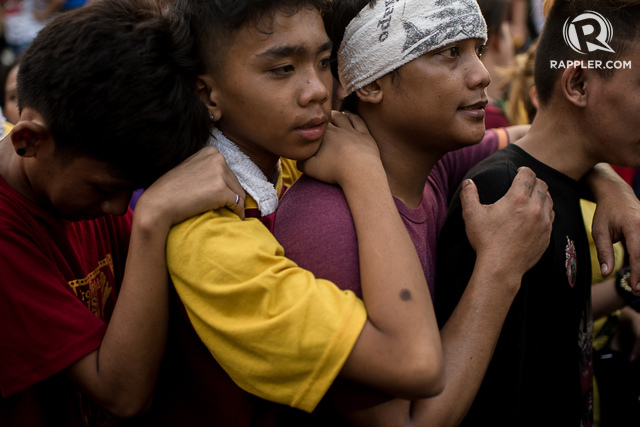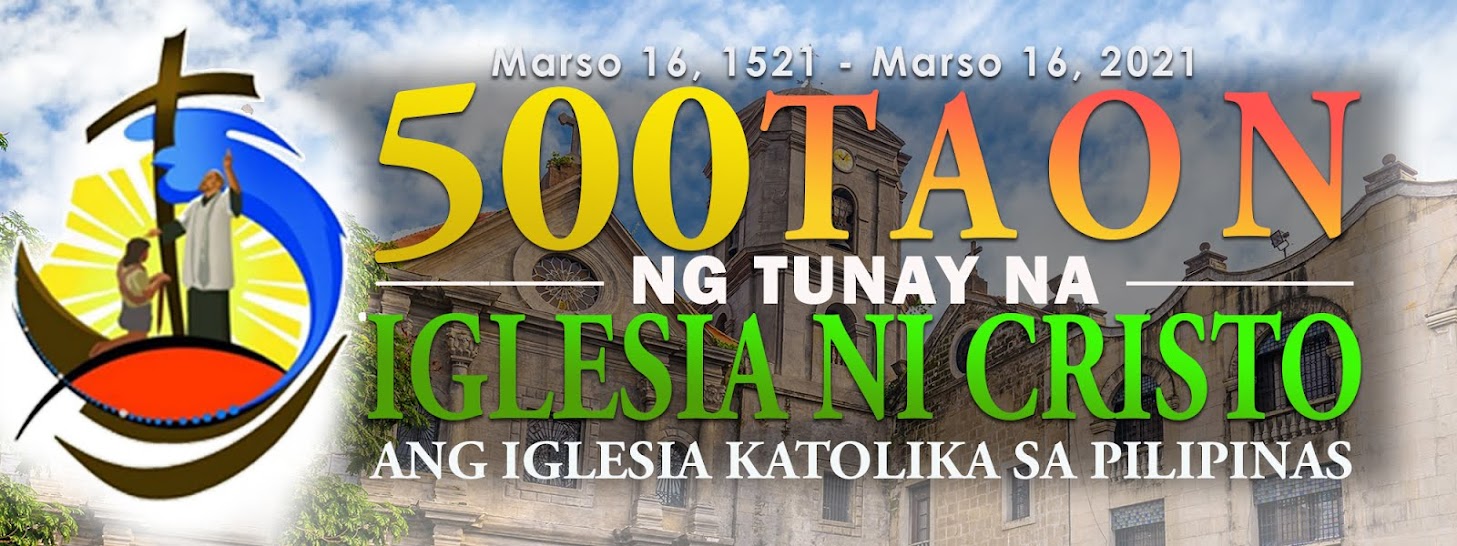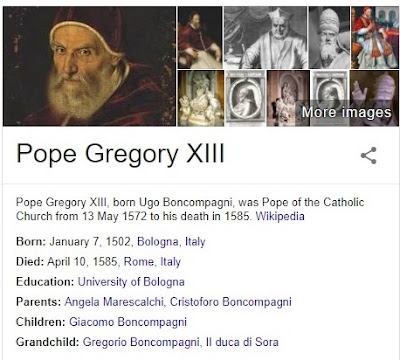Why teenagers join the Nazareno procession
To keep traditions, realize dreams, and hope for miracles
 |
| TRADITION. Jerome Dalumpines (2nd from the left) goes through the crowd in Quiapo with his friends. Photo by Eloisa Lopez/Rappler |
Rappler.com MANILA, Philippines – Every January 9, a multitude of devotees join the procession or Traslacion of the image of the Black Nazarene of Quiapo Church, walking barefoot for hours through the streets of what used to be called downtown Manila.
As millions push and shove with blind zeal during the often 24-hour long Traslacion, millions too are the reasons, prayers, and wishes in the hearts of these devotees.
Among them are teenagers, who have been taking on the “challenge” of joining the procession – jostling, pushing, shoving, and climbing over the sea of humanity to touch the black image of Jesus Christ.
Many of these youth march in groups, hovering at the fringes along the route of the procession, mindless of the Traslacion's religious meaning.
Fifteen-year-old Ryan Bernabe is among these clueless youngsters, admitting that he began participating in the Traslacion 5 years ago with no meaningful reason. He simply wanted to join his friends who dressed up in yellow and maroon shirts every 9th of January, and walked barefoot from their homes in Tondo to Quirino Grandstand, and then to Quiapo Church.
For many years, Ryan felt he was left out, as he was born and raised a member of Iglesia ni Cristo. He was the only non-Catholic in his barkada.
Envious of his friends’ annual "get-together," he made a decision to convert to the Roman Catholic religion. He recalled telling his father his decision. “'Pa, I will leave Iglesia. I want to join in [the procession of] the Nazareno. I’m envious of my friends,” he supposedly said.
While his father hesitated, there was no stopping the stubborn boy. The next time he was invited to the procession of the Nazareno, he went ecstatic. He was 10.
For two years, he went with his friends as if it were a group outing. They wore matching shirts, walked miles together, and proudly identified themselves “Batang Herbosa” (kids of Herbosa Street, Tondo). It was all about the thrill of the “challenge” to touch the image of the Black Nazarene.
Such was Ryan's situation until two years ago, when he met a real-life challenge. Both of his parents were jailed for drug possession and use.
Life as he knew it changed in an instant. Ryan, the second of 6 children, had to take up new responsibilities. He found a real purpose for joining the Traslacion.
“[For two years,] I have prayed for my parents to be freed soon,” Ryan said in Filipino. “We were told they were supposed to come home in December [last year], but until now they haven’t. I just want them to be home.”
For 14-year-old Jet Soriano, however, his first experience of the Traslacion was not for the sake of participating in the procession. He did not walk barefoot and breathless for nothing. He had fervent request to ask the Black Nazarene, absolutely believing the image was miraculous.
For years, Jerome said he noticed a falling out in the relationship of his parents. But it was only recently that the teenager discovered that it was because his father had another woman.
In his first dive into the Traslacion, his fervent prayer was to have a "whole" family. “I hope Mama and Papa can fix their marriage,” Jet said in Filipino.
For the sake of tradition
Meanwhile, others simply join the procession for the sake of tradition.
Fourteen-year old Jerome Dalumpines had just gone through what seemed to be an endless wall of people to reach the andas (carriage) bearing the antique statue of the Black Nazarene. He was nearly out of breath.
“It’s euphoric,” Jerome said, “once your hand touches the image of the Black Nazarene. It’s as if all your problems are gone, like all your sins are forgiven.”
Jerome was 11 when he started joining the procession after being influenced by his brother and grandfather, who were both long-time devotees and participants of the Traslacion. He has no specific “wish” to the image that is believed to be miraculous, unlike other devotees who credit all their blessings to the Nazarene.
For him, keeping alive the family tradition was enough reason to attend every year. “I will do this until I’m old, even just for that,” Jerome said.
Likewise, 17-year-old Noel Cahulugan Jr made the life-threatening act of driving through the throng to touch the Black Nazarene Tuesday morning, January 9, to continue a loved one’s tradition.
Three years ago, Noel lost one of his closest friends, “Bradley,” who was then a sacristan in their parish in Novaliches City. Growing up together, Noel watched from the sidelines as Bradley kept his devotion to the Black Nazarene.
When Bradley died, Noel felt he had to take on his role.
“It had always been his dream to touch the image of the Nazarene,” Noel said. “Since we grew up together, when he died, I vowed to continue his dream.”
And for the last 3 years, Noel and his friends have kept their promise. – Rappler.com





















